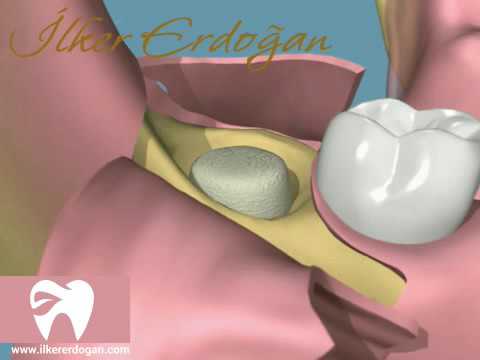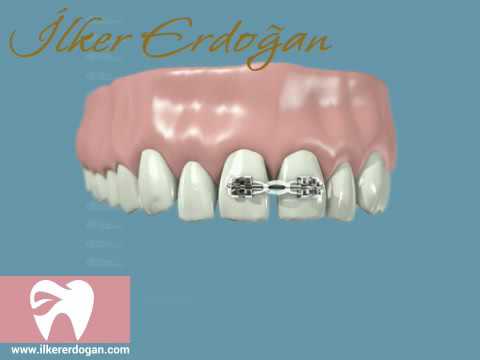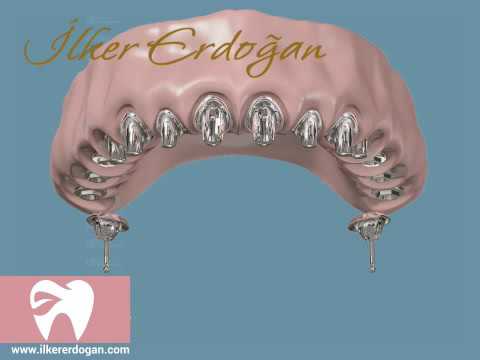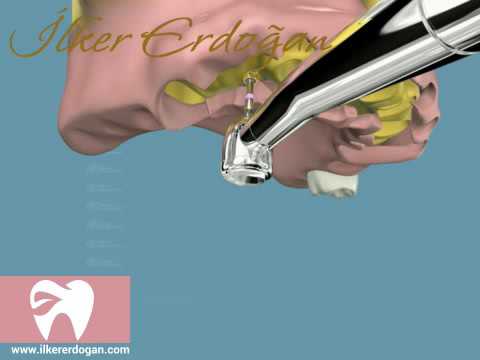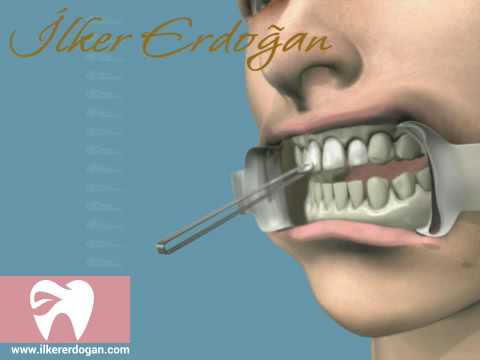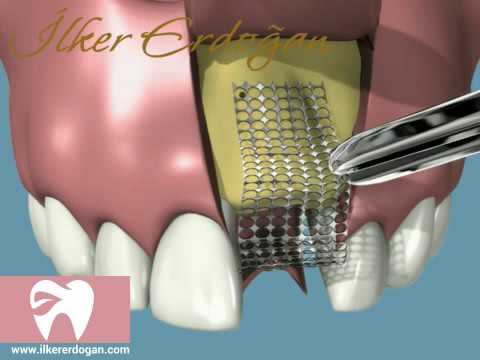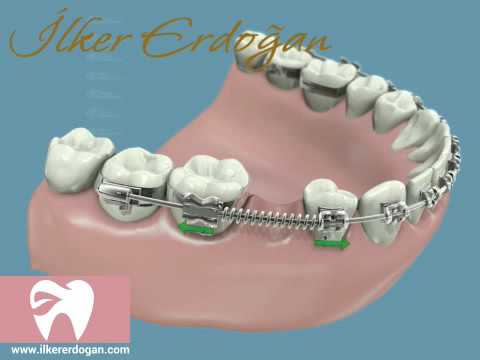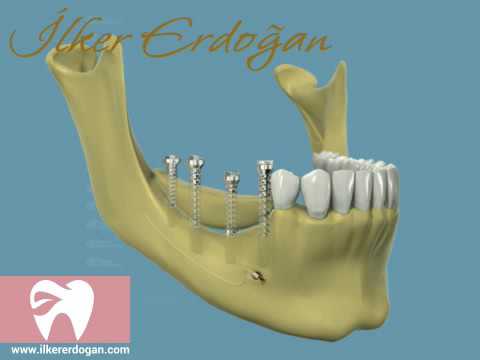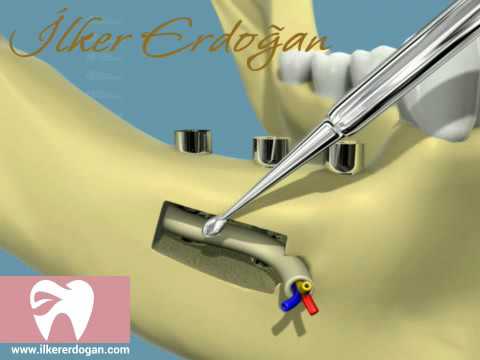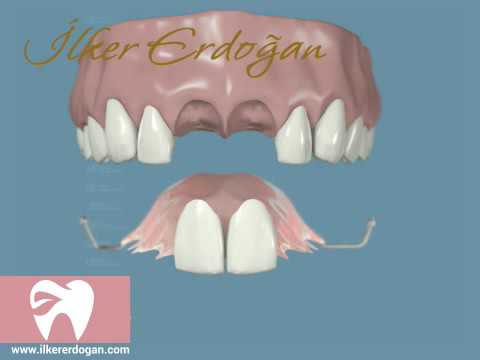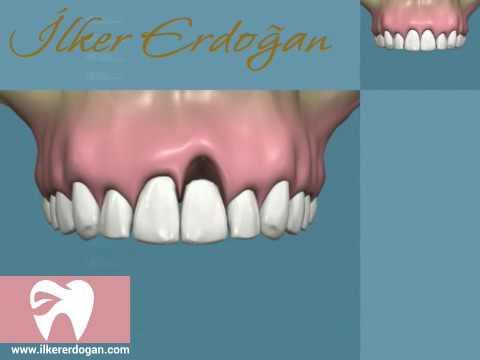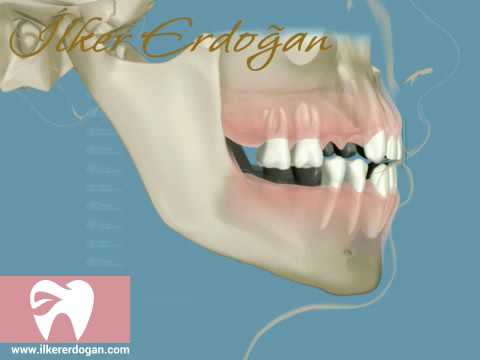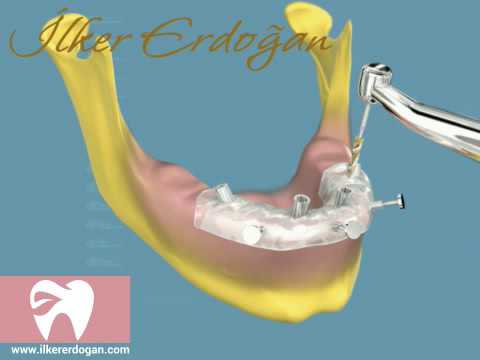Thanks to emerging technologies, implant operations can be completed in just four minutes. All treatment ends in the second month after the first operation.
Laser implant applications are known as minimally invasive methods. This method can be applied in any area where bone volume is appropriate. The purpose of the method is to open the gums only in the area where the implant will be applied by using Erbium, Diode, Nd-YAG, Co2 lasers.
In laser-assisted minimally invasive implant application method, patients ' comfort after the operation is maximum as only a gingival and bone operation is performed in the area where the implant will be applied.
In laser-assisted implant applications, the effort made to pierce the hard layer of bone can sometimes generate heat and vibration in the bone.
With the hydrokinetic cutting technique of Erbium-YSGG lasers, all kinds of bone surgery and implant application can be done without disturbing bone tissue, without causing thermal damage and thus the maximum level of bone boiling after the operation.
WOUND HEALING ACCELERATES
After laser-assisted implant applications, Biostimulation applications made with Diode or Nd-YAG lasers to patients increase patient comfort as well as accelerate wound healing.
The three-dimensional computed tomography that will be taken from the patient before the laser-assisted implant application gives us details about the width and depth of the bone tissue in which the implant will be placed. In this way, a surprise will not be encountered during the operation and the operation will be concluded in a short time.
The all on Four and Columbus Bridge methods, which are now being applied worldwide, heal faster when laser-assisted, because there is no open wound site, and because there are no stitches, they prevent food accumulation and make it easier to use teeth after surgery.
IT COULD BE DONE IN TWO HOURS.
Especially in the case of single tooth deficiencies, the implant is applied immediately when the appropriate bone is found by laser-assisted implant application. The Implant can also be placed on the patient's permanent tooth in a short period of time by performing ceramic reconstruction with CAD-CAM method.
This type of laser can be applied individually or in combination in all hard and soft tissue applications in dentistry.
The biggest advantages of laser-assisted implant applications are that it eliminates the need for stitches and therefore reduces bleeding to a minimum because it is entered from a very small area.
In addition, there is no need for anesthesia in small applications to be performed with laser on the gums before or after implant operations.
How soon will the treatment be completed?
Today, it is possible to complete Implant operations in just four minutes. The total time may vary according to the type of operation determined by your tooth and bone structure. Treatment usually ends in the second month after the first operation. During this time you can continue your daily life with temporary dentures.
Are prosthetics inserted after implants are placed?
For the first two to three months, the load on the implant should be minimized in order to ensure the complete fusion of the implants with the bone. Your doctor will make a temporary prosthesis suitable for you during this healing period. Then the permanent teeth will be added onto your implants and the treatment will be terminated.
How important is the cleaning of the implants?
If the implants are considered to be foreign objects in the mouth, it should be known that their cleaning is as important as your own teeth. Implant cleaning is not different from normal teeth cleaning. Your dentist will give you detailed information about cleaning methods. One thing to remember is that regular oral care is the most important factor for this type of application to be successful.
Can replace two or three teeth?
The prosthesis to be made on the Implant may be of different types depending on the nature of the case. It can be removed by the patient for easy cleaning, or it can be applied to be removed by the dentist. There are pros and cons of both forms of application and your physician will determine the design that best suits you before your treatment begins.
Are implants necessary for all missing teeth?
If the number of missing teeth is more than one, a single implant can replace two or three teeth depending on the area to be applied.
What can happen if the implant screw does not fuse with the bone?
Such a possibility is reduced to a minimum by using a method appropriate implant and appropriate vanishingly. This type of failure usually occurs within the first three months following surgery. In this case, the implant should be removed with a procedure as easy as tooth extraction. After the recovery of the bone in this region, a new implant can be installed or one of the classic types of prosthetics may be preferred. In cases where more than two implants have been placed, the remaining implants retain their functionality through the re-design of the prosthesis.
ADVANTAGES OF IMPLANT TREATMENT
What are the advantages of Implant treatment?
Patients who have lost all their teeth in the lower jaw and have dentures installed:
These patients complain of constant pain and inability to chew well due to the movement of the prosthesis. These complaints may increase with the melting of the bone tissue that supports the prosthesis over time. In this type of patients, implant treatment can eliminate all of the above complaints as well as stop bone melting.
Patients who have lost all their teeth in the upper jaw and have prostheses:
Although upper dentures are more stable than lower jaw dentures, the design of the prosthesis that closes the palate can reduce the sense of taste and cause nausea.
Patients who have lost part of their teeth in the lower or upper jaw:
Patients with this type of complaint may have to cut their healthy teeth in order to remove the ugly appearance of the prosthesis that is held with hooks or to make a bridge.
Patients who have lost one tooth:
In classical forms of treatment, one needs to sacrifice at least two adjacent teeth for the treatment of one tooth. In these cases, adjacent teeth to be installed with a single implant are recovered, as well as more aesthetic dental structure and functional results are achieved.



